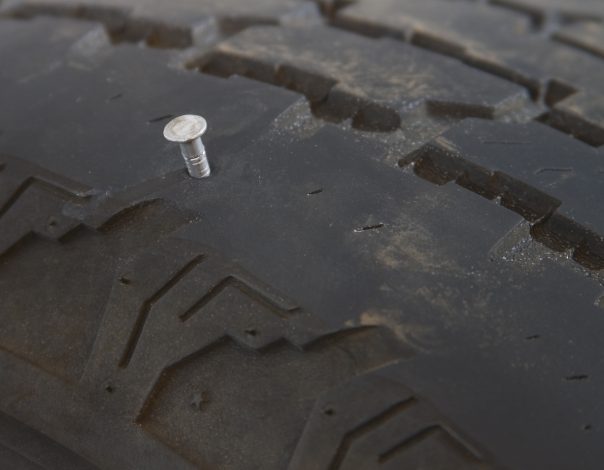What to Do if There’s a Nail in Your Tire
With our decades of tire technology and performance expertise, GT Radial is here to help you navigate the unexpected—like finding a nail in your tire. Knowing the right steps can prevent further damage and keep you safe on the road, whether you’re dealing with a slow leak or a full puncture. Follow this guide to handle the situation properly and get back to driving with confidence
1. Assess the Damage
- Before taking any action, carefully inspect the tire to determine the severity of the puncture.
- If the nail is embedded in the tread and the tire isn’t losing air rapidly, you may be able to drive a short distance to a repair shop.
- However, if the sidewall is punctured or the tire is losing air quickly, avoid driving on it, as this could cause permanent damage.
2. Do Not Remove the Nail (Yet)
- It might be tempting to pull the nail out immediately, but doing so can make the problem worse.
- The nail is likely helping to temporarily seal the hole, preventing further air loss
- Instead, leave it in place until you reach a tire repair professiona.l
3. Check Tire Pressure
- Use a tire pressure gauge to check if your tire is losing air.
- If the pressure is significantly lower than the recommended PSI (found in your vehicle’s manual or driver’s side door jamb), you may need to inflate it temporarily to avoid additional damage.
- However, this is only a short-term solution to help you reach a repair facility safely.
4. Drive Cautiously to a Repair Shop
- If your tire is holding air, drive slowly and carefully to a nearby repair shop.
- Avoid high speeds and rough terrain, as these can worsen the puncture.
- If you’re unsure about driving, consider using a spare tire or calling roadside assistance.
5. Consider Repair vs. Replacement
- Once you arrive at the tire shop, a professional will assess whether the tire can be repaired.
- In most cases, punctures that occur in the tread and are less than 1/4 inch in diameter can be safely patched or plugged.
- However, if the damage is on the sidewall, too large, or near a previous repair, replacing the tire may be necessary for your safety.
6. Prevent Future Tire Damage
To reduce the risk of running into the same issue again:
- Regularly inspect your tires for embedded debris.
- Maintain proper tire pressure to minimize the impact of road hazards.
- Choose durable, high-quality tires, such as GT Radial tires, engineered for longevity and reliability.
Trust GT Radial Tires for Exceptional Performance and Safety
At GT Radial, tire safety and performance are at the core of everything we do. Our advanced tire technology ensures durability, reliability, and peace of mind for drivers. When faced with a punctured tire, seeking professional assistance and using high-quality products can make all the difference.
Stay safe on the road by keeping your tires in top condition and relying on GT Radial for expert solutions. Click here to learn more.


